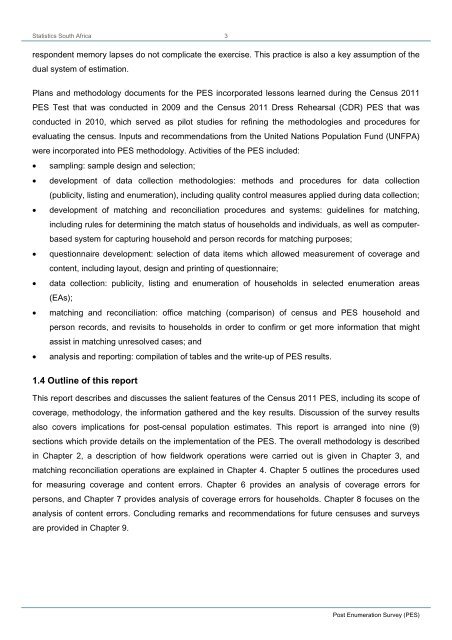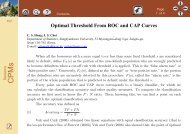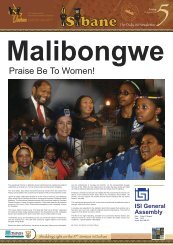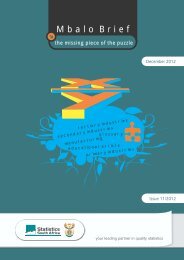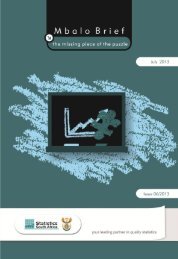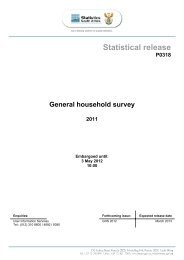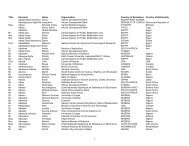Post-enumeration Survey (PES) - Statistics South Africa
Post-enumeration Survey (PES) - Statistics South Africa
Post-enumeration Survey (PES) - Statistics South Africa
You also want an ePaper? Increase the reach of your titles
YUMPU automatically turns print PDFs into web optimized ePapers that Google loves.
<strong>Statistics</strong> <strong>South</strong> <strong>Africa</strong><br />
3<br />
respondent memory lapses do not complicate the exercise. This practice is also a key assumption of the<br />
dual system of estimation.<br />
Plans and methodology documents for the <strong>PES</strong> incorporated lessons learned during the Census 2011<br />
<strong>PES</strong> Test that was conducted in 2009 and the Census 2011 Dress Rehearsal (CDR) <strong>PES</strong> that was<br />
conducted in 2010, which served as pilot studies for refining the methodologies and procedures for<br />
evaluating the census. Inputs and recommendations from the United Nations Population Fund (UNFPA)<br />
were incorporated into <strong>PES</strong> methodology. Activities of the <strong>PES</strong> included:<br />
• sampling: sample design and selection;<br />
• development of data collection methodologies: methods and procedures for data collection<br />
(publicity, listing and <strong>enumeration</strong>), including quality control measures applied during data collection;<br />
• development of matching and reconciliation procedures and systems: guidelines for matching,<br />
including rules for determining the match status of households and individuals, as well as computerbased<br />
system for capturing household and person records for matching purposes;<br />
• questionnaire development: selection of data items which allowed measurement of coverage and<br />
content, including layout, design and printing of questionnaire;<br />
• data collection: publicity, listing and <strong>enumeration</strong> of households in selected <strong>enumeration</strong> areas<br />
(EAs);<br />
• matching and reconciliation: office matching (comparison) of census and <strong>PES</strong> household and<br />
person records, and revisits to households in order to confirm or get more information that might<br />
assist in matching unresolved cases; and<br />
• analysis and reporting: compilation of tables and the write-up of <strong>PES</strong> results.<br />
1.4 Outline of this report<br />
This report describes and discusses the salient features of the Census 2011 <strong>PES</strong>, including its scope of<br />
coverage, methodology, the information gathered and the key results. Discussion of the survey results<br />
also covers implications for post-censal population estimates. This report is arranged into nine (9)<br />
sections which provide details on the implementation of the <strong>PES</strong>. The overall methodology is described<br />
in Chapter 2, a description of how fieldwork operations were carried out is given in Chapter 3, and<br />
matching reconciliation operations are explained in Chapter 4. Chapter 5 outlines the procedures used<br />
for measuring coverage and content errors. Chapter 6 provides an analysis of coverage errors for<br />
persons, and Chapter 7 provides analysis of coverage errors for households. Chapter 8 focuses on the<br />
analysis of content errors. Concluding remarks and recommendations for future censuses and surveys<br />
are provided in Chapter 9.<br />
<strong>Post</strong> Enumeration <strong>Survey</strong> (<strong>PES</strong>)


